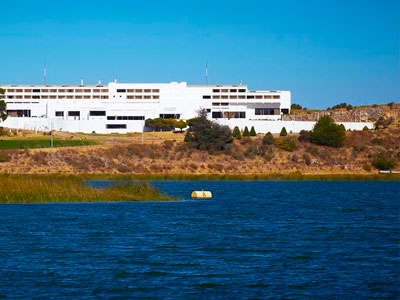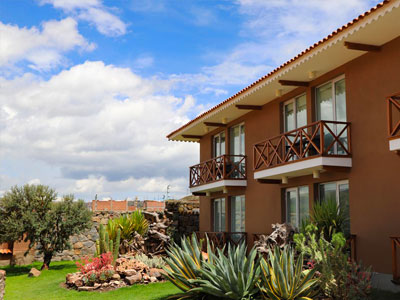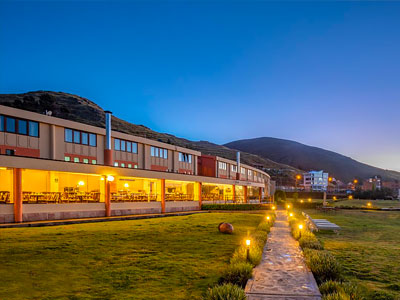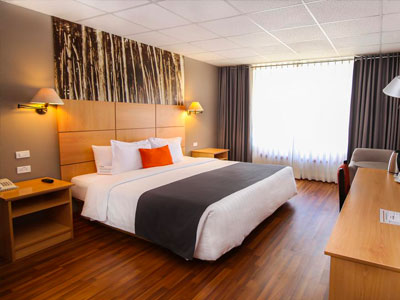
Kim MacQuarrie
Four-time Emmy-winner

Situated on the border between Peru and Bolivia, the surreal beauty and historical heritage of Lake Titicaca make it one of South America’s most rewarding destinations. Ancient civilizations thrived on the shores and islands of this high elevation lake for thousands of years. Today, its mystical waters are home to diverse Andean communities that you can engage with during one of our Lake Titicaca tours.





Lake Titicaca is a breathtaking destination in Peru that borders Bolivia. You’ll explore cultural curiosities, learn about ancient civilizations, and witness the spectacular scenery of this unique landscape.

The floating islands of Uros are the main attraction of Lake Titicaca. The Uros community built these man-made islands from reeds found in Lake Titicaca called totora reeds, as they’ve done for centuries. As you step onto the floating islands you’ll be welcomed by their residents and educated about their way of life.

The island of Taquile was relatively isolated from the rest of Peru until recently due to its location off the shores of Lake Titicaca. Its inhabitants, regardless of gender, have upheld a long-standing tradition of textile art. These weavings have been declared by UNESCO as an Intangible Cultural Heritage of Humanity.

Puno is celebrated as the folklore capital of Peru and hosts the Candelaria Festival every year in February. This lakeside city is the gateway to Lake Titicaca.

Every year at the beginning of February, the Festival of the Virgen de la Candelaria is celebrated in Puno for 18-days. This vibrant festival is filled with colorful costumes, local Peruvian music, and traditional dances.

Close to Lake Titicaca, Sillustani is a cylindrical necropolis along the shores of Laguna Umayo. A pre-Inca burial site, Sillustani was built over 500 years ago by the Culla civilization. Here you can find ruins with carvings of sacred animals and 40 ft. tall towers.

Amantani is one of the real islands on Lake Titicaca, not a floating one. Here you can do a Lake Titicaca homestay with a local family to make new connections and learn more about the way of life on the island.

Cutimbo is an impressive ancient burial site close to Lake Titicaca. Like Sillustani, you can witness some impressive archaeological finds like stone tombs, cave paintings, and carvings.

The Pukara archaeological complex is located about one hour north of Puno. Inside is the Pukara Lithic Museum where you can discover weaving tools, pieces of decorated pottery, and other artifacts. Some of these pieces date back to 500 BC.

Isla Esteves s/n, Puno
GHL Hotel Lago Titicaca is located right on the shores of Lake Titicaca on a private peninsula. With tastefully decorated rooms, modern amenities, and perfect views of Lake Titicaca, this hotel has all the makings for an unforgettable stay.

Avenida Sesqui Centenario 1970, Sector Huaje, Puno
Casa Andina Premium Puno is a magnificent upscale hotel that will add to the unforgettable memories made on the shores of Lake Titicaca. This 4-star hotel has an onsite gourmet restaurant, a private pier leading to Lake Titicaca, and rooms with scenic wooden balconies overlooking Lake Titicaca.

The Sonesta Posadas del Inca is ideally located on the shores of Lake Titicaca and just a few miles from Puno’s main plaza. Enjoy sitting outside or dining at the on-site Inkafé restaurant as you relax next to the deep blue waters that overlook snow-capped peaks.

Avenida Chulluni 195, Puno
The Xima Puno Hotel is a charming 2-star option with beautifully manicured grounds. This is a great option for comfort, excellent service, and affordable prices while you visit Lake Titicaca.
Peru is filled with archaeological ruins, scenic landscapes, and delicious flavors. Must-see places in Peru include:
Peru is filled with archaeological ruins, scenic landscapes, and delicious flavors. Must-see places in Peru include:
Hike the Inca Trail to Machu Picchu in four or two days. The Inca Trail is a 500-year old pathway where the elite Incas once entered into the “Lost City of the Incas”. Plan with your Peru for Less travel advisor in advance, Inca Trail permits tend to sell out even 6-months in advance.
Step into the lush Peruvian Amazon Rainforest and witness a spectacular array of wildlife in its natural habitat. Lodges in Puerto Maldonado are ideal for excursions and daily activities. Those looking for a more luxurious Amazon experience would love an Iquitos Amazon River cruise. Colorful macaws, giant tarantulas, and playful river otters are among the sights you’ll behold.
Cusco city has it all, archaeological ruins, colonial buildings, top-rated restaurants, and countless places to explore. Your Cusco City Tour will take you to the top highlights like Sacsayhuaman, Q’enko, the Cusco Cathedral, and more.
Sail on the deep blue waters of Lake Titicaca and step on the reed Uros and Taquile floating islands. Some of the best weavers are found in this area so pick up some Peruvian textiles here for unique souvenirs.
Lima is a mixture of modern city living and historical significance. Here you’ll find Central restaurant (ranked #6 by 50 Worlds Best), UNESCO World Heritage sites like Historic City Center with the San Francisco Convent, and the best shopping in Peru.
The Nazca Lines are mysterious geoglyphs and geometric shapes drawn onto the desert floor hundreds of years ago by the Nazca culture. Little is known about them nevertheless, the Nazca Lines inspire awe in those who take a flight over them.
Arequipa is a picturesque town and also the second-largest city in Peru. Local markets, beautifully built colonial architecture, and El Misti volcano are among the things you’ll see while walking the cobblestone streets of the white city.
Puno and Lake Titicaca is 12,500 feet (3,800 meters) above sea level. Located in the Andes mountains between Peru and Bolivia, it is the world’s highest navigable lake. At this elevation, you are very likely to experience symptoms of altitude sickness.
3 days and 2 nights. Lake Titicaca tours start early in the morning meaning you’ll need to arrive into Puno the afternoon before. It’s best to arrive after having already spent a few days at high elevation destinations like Arequipa or Cusco so that you’re well acclimated. The tour of Lake Titicaca is a full day tour which means you’ll need to do another overnight before heading to the airport or bus station the next morning.
Yes, Lake Titicaca is worth visiting if you are looking for cultural experiences, enjoy physical activity and have time in your Peru itinerary. The landscape is literally breathtaking, and a sunset at Lake Titicaca will surely be a highlight of your trip. The local communities on the Uros floating islands, Taquile and Amantani still practice traditions passed down through generations. Some say Lake Titicaca is too “touristy” as you will locals selling their craft throughout your tour. However, many visitors rave about their Peruvian souvenirs.
The best Lake Titicaca tour for couples is to combine your Lake Titicaca boat tour with an overnight stay on Isla Suasi or Titilaka. Both are private islands on Lake Titicaca and are perfect for a honeymoon or couples getaway.
The Lake Titicaca boat tour suitable for older children. However, the high elevation can make this destination difficult for families with young children who may need to be carried during a tour.
There are a few ways to get to Lake Titicaca from Lima and from Cusco. Flights operate daily from Lima and Cusco to the Juliaca airport an hour away from Puno and Lake Titicaca. PeruRail offers a train ride from Cusco to Puno that passes through the scenic Southern Valley. Bus tours from Cusco to Lake Titicaca offer transit with stops at museums, ruins and historic sites along the way. A 19–21 hour bus ride is possible from Lima to Puno.